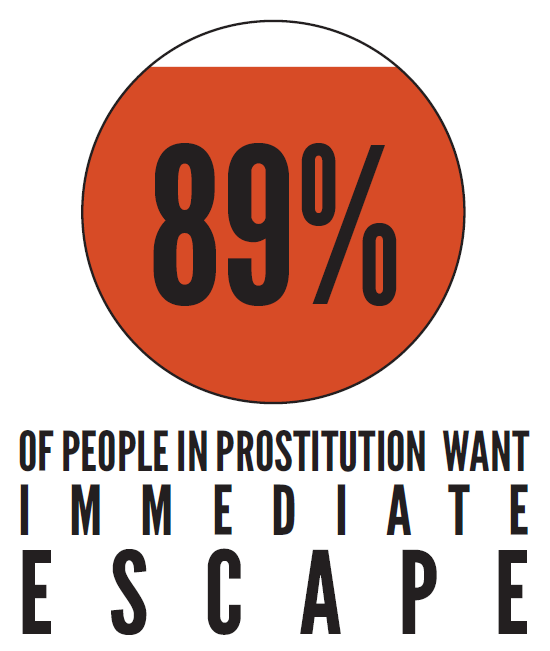Chapter 2 Traps





2.1 Alissa’s Story
Alissa’s home life was difficult and confusing. She found freedom when she got her dirver’s liscense the day she turned sixteen. The next Friday night, she took off in the car. When she stopped at a convenience store to grab a snack, a good-looking man of about thirty leaned against the counter and smiled at Alissa as she paid for her candy bar. Alissa was thrilled with the attention of a “real man.” When he struck up a conversation with her, Alissa was elated. Thinking the handsome man actually considered her a grown woman; she flirted with all her 16-year-old skill. The pair spent the evening together at a local pool hall and Alissa developed quite a crush on the attractive, older man.



Each weekend for the next few weeks, Alissa met her new boyfriend at the convenience store and spent hours with him being treated like a woman instead of a child. After a few dates, she accepted his invitation to move in with him. Alissa packed her clothes and took off to the city to start her new life.
Before long, Alissa’s boyfriend told her he had lost his job and couldn’t pay the rent. She was horrified when he told her she would have to return to her parents’ home and begged him to let her help so she could stay with him. Slowly and cautiously, he introduced Alissa to the idea of becoming an escort—simply accompanying men on dates for money. This sounded like a good idea to Alissa, so she quickly agreed. She would do anything to keep playing house with her new lover.
Then the dream became a nightmare.
On the night Alissa was to escort her first paying customer, her boyfriend casually told her the man would expect to have sex with her. When a shocked Alissa refused, she found herself thrown to the floor and cruelly beaten. So, Alissa met her first customer - her first “john” - as planned.
Shortly after, Alissa was engaged in full-time street prostitution and forced to hand over all of her earnings. Alissa’s “boyfriend” tattooed her with his nickname, branding her as his property. He posted prostitution advertisements with her picture on different websites. He rented hotel rooms and forced Alissa to have sex with men who responded to the ads. He threatened Alissa with an assault rifle he kept in the closet of his apartment. Over the next months, he physically assaulted her on multiple occasions. He would then leave her alone and scared in the dingy apartment, carrying on with his life as if nothing were out of line. 1 & a
Here’s another story of a survivor of sex-trafficking.



2.2 Myths vs Facts
The myths of sex trafficking act as the dry kindling
for destructive fires to spread around world.

Many people think since they do not purchase sex they are not contributing to sex trafficking. This helps, but now lets get prepared to go deep into the ecosystem that is enabling this fire to rage across dry, global kindling.
Sex trafficking is hidden in plain sight.
Many people do not realize this simple fact - strip clubs, pornography, sexually explicit websites are often times fostering sex trafficking. “How is this possible?” you ask.
Strip clubs and pornography - not in all cases, but in many - are gateways to ordinary people becoming trafficking victims and environments in which traffickers keep and exploit their sex trafficking victims.
To realize the above can cause angst among those who hear it, because most cultures like to show these things as victimless environments. But the truth is - victims abound.
Watch this video of a man who used to manage a major strip club for more than 10 years:


MYTH: The vast majority of people enter prostitution by choice.
FACT: The majority of people involved in the commercial sex trade industry are involved against their will.
Below is an example of robust research that supports this fact.
• A 9-country study that interviewed over 800 prostituted individuals found that 89% of people in prostitution wanted immediate “escape.” Not a part-time job - “escape”. 2
- [Important to note: it says 89%, not 100%. As we want what we say to be taken seriously, we do not engage hyperbole. We acknowledge that there is a small amount of people who have chosen this life and say it is what they want to do. However, even in that small amount of people, we are skeptical that if given an alternative most would continue to choose prostitution.]



Dr. Melissa Farley, a researcher on the effects of prostitution, sexual abuse, and violence against women, writes about the reasons women enter into prostitution, whether legal or illegal. Farley writes, “Most women in prostitution did not make a rational choice to enter prostitution from among a range of other options… They did not have other real options such as medicine, law, nursing, or politics. Instead, their ‘options’ were more in the realm of how to feed themselves and their children. Such choices are better termed survival strategies.”* 3
The above myth is a primary enabler of the other myths to survive and spread. As you read more of these myths about sex trafficking and the commercial sex trade industry, begin to consider how you see these messages communicated in your daily life whether through movies, TV shows, media, conversations, etc.

MYTH: Most prostituted individuals are “in business” for themselves.
FACT: Studies show most individuals in prostitution neither organize their own business, nor receive the profits.
• Approximately 75 percent of all prostitution is pimp-dominated. 17
• Pimps establish quotas for the women and children they enslave ranging from $500 to $1,000 or more per night. The pimps strongly punish these women for not reaching their quotas with physiological and physical violence. Further, the pimps usually take all the money. 18 Taking the conservative quota of $500/night and “working” 300 days/year, the victim would generate $150,000/year for their trafficker.



“Owners” of sex trafficking victims rent out their “property” to the highest bidder. Anyone who uses, knowingly or unknowingly, a victim of sex trafficking pays to rent the body of an enslaved, prostituted individual. If 89 percent of prostituted individuals want to escape, those individuals are not conducting their business willingly.
And unlike drugs that are used once and then are done, a trafficker can and does exploit their victims over and over again.
MYTH: Prostitution is a victimless crime.
FACT: Prostitution destroys the lives of its victims.
• As many as 80 percent of the women engaged in prostitution suffer physical violence from pimps and buyers, along with other negative health consequences. Some of these negative health consequences include arthritis, liver disorders, reproductive system disorders, respiratory disorders, STD infections, including HIV and neurological problems. Additionally, studies show as many as 75 percent of prostituted individuals suffer from drug and/or alcohol abuse. 13
• A study of prostituted women across 9 countries found that approximately 70 percent met the criteria for post-traumatic stress disorder. 14
• In a study of 130 U.S. individuals in prostitution, 68 percent had been raped since entering prostitution. 15

MYTH: Prostituted individuals can leave when they choose.
FACT: Prostituted individuals are trapped in the commercial sex industry by threats, violence, addiction, and poverty.
There are many internal and external factors that contribute to the continued victimization of these individuals. 19 While each story is different, it will usually include one or more of the following external and internal factors:
- First, we will focus on the External Traps
As highlighted by the stories in this book, prostituted individuals are deliberately given misinformation and false promises to manipulate them into staying. Often the individual’s identification documents are taken away, stopping them from being able to contact authorities.
Pimps use many physical methods to keep individuals enslaved. These can include:
• Locking up the individual in rooms or closets for extended periods, and isolating them from others and support systems.
• Using violence and threats of violence (e.g. beatings, rape, sexual assault) towards the individual and their family.
• Frequently monitoring their whereabouts as well as frequently moving them to unfamiliar settings.
• Pimps put these victims under crushing financial debt with drug addictions.
Furthermore, most victims drop out of high school. And the pimps want them to acquire criminal records and become addicted to drugs, so it’s harder for them to find a job.
NOw think about this: if a victim of trafficking wanted to escape, they do not have a high school diploma, no job record, multiple criminal records, and likely addicted to substances - do you know any company that would hire someone with that profile…?
It’s no wonder why 75% attempt to commit suicide (the next Chapter will go into this more).
It’s these realities that are jolting to the soul.
- Now, we will pivot to Internal Traps:
Many prostituted individuals feel that they owe not only a financial debt to their pimps but an emotional debt as well. This is only the beginning of the internal traps that these victims wrestle with.
Others include:
• Dependency on and loyalty to the pimp similar to Stockholm Syndrome / Battered Women’s Syndrome.
• Shame and self-blame. These individuals become burdened by the things they have done, how society looks at them, and blaming themselves for not being able to change things.
• In the event they want to change things they live under the fear of retaliation to them and their loved ones and a general distrust of law enforcement and adding to previous criminal records.
All this leads to a sense of hopelessness by the individual and the inability to see a way out.
2.3 Reflection



What myth was the most thought provoking for you?
If the myth is true, what does that mean?
- If you find this to be a difficult question to answer, then think about what it would imply if it were true. What would it imply about women, children growing up, our country’s laws, etc.?
If the facts are true, what does that mean?
- Now if the facts are correct what does that mean about women? What would it imply about children growing up? What would it imply about our country’s laws?
2.4 Action Points



One person can only do so much. But an army of people determined to put an end to slavery can, literally, change the face of our world. Make sure the people in your life know the reality of sex trafficking and the sex trade industry.
• Think of three to five people you need to share this message with.
This week, try talking through one of the myths and facts with at least of the people you thought of above. This information is not easy to digest and process quickly, and one of the best ways to deepen your understanding and affect change is by educating others. Discussing the myths and facts about human trafficking is one material way to come to terms with the reality of the issue.
As Edmund Burke has famously said:

“The only thing necessary for the triumph of evil is for good men to do nothing.”

